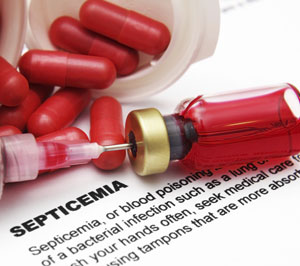
In 2001, a single-center randomized trial showed that early goal-directed therapy (EGDT) reduced mortality rates for septic shock, a high-mortality condition. The trial outcome earned EGDT an endorsement from the Surviving Sepsis Campaign as the go-to treatment for patients presenting to emergency rooms with septic shock. EGDT is an aggressive treatment requiring insertion of a catheter into the jugular vein to monitor oxygen levels in the blood returning from the body to the heart.
Now, a new study from Australia and New Zealand, published in the New England Journal of Medicine, has found that EGDT does not make a difference compared with the participating institutions’ usual treatment. Further, the study showed that Australia's and New Zealand’s septic shock mortality rates are lower than reported elsewhere.
The large-scale 6-year study included more than 40 hospitals and was led by the Australian and New Zealand Intensive Care Research Centre at Monash University. In the study were 1,600 patients with early-stage sepsis who were admitted to emergency care. The first group of 796 patients received EGDT, which is not currently used in Australia and New Zealand. The second group with 804 patients received the usual course of standard care given in Australia and New Zealand, a combination of rapid specialist-led care, powerful and immediate antibiotics, and rapid resuscitation in either emergency departments or intensive care units.
The study found that in Australia and New Zealand, hospital mortality rates for both groups were close to 15 percent, the lowest ever reported for this life-threatening condition, according to the authors. The research called into question the effectiveness of EGDT because researchers found it did not make any noticeable difference in survival rates.
Another factor that might be responsible for the region’s low sepsis mortality rate is its rigorous emergency and intensive care training programs, according to the authors.
Read the study details in the New England Journal of Medicine.